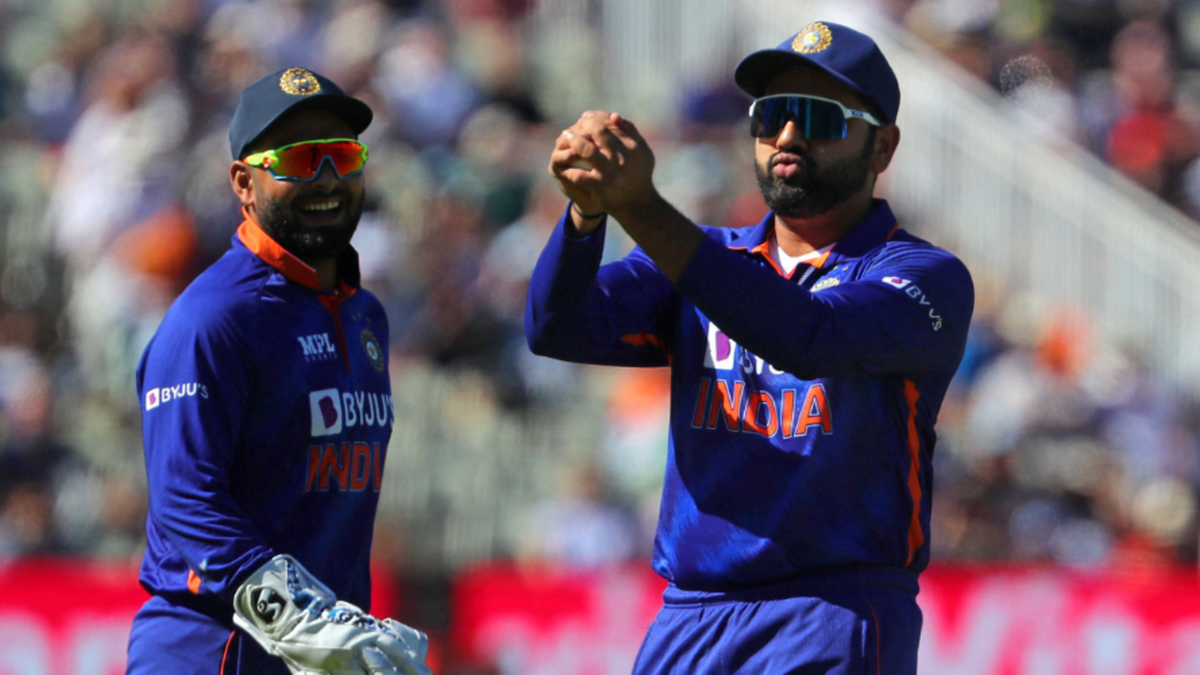
Almost a year ago, Pakistan blew India out of the water at Dubai. With a similar high-stakes clash beckoning, India have a chance to show far they have come since then, writes Shashwat Kumar.
The 2021 T20 World Cup was supposed to be Virat Kohli’s swansong as T20I captain. He had a galaxy of stars to choose from. With the T20 World Cup being held in the UAE, where the IPL had just concluded, India seemed to be in pole position to clinch the crown.
That, though, fell flat on its face with India getting dumped out in the Super 12 stage. They could only muster six points and had to fly home early, leading many to question where things had actually gone wrong. Several different explanations were put forth, although the overriding theme was that their defeat to Pakistan for the first time in a men’s World Cup, had derailed a potential title charge.
Against Pakistan, almost all of India’s nightmares morphed into reality. India lost three wickets inside the powerplay, two of them to Shaheen Shah Afridi. In an effort to rebuild, they batted too conservatively and ended up with a middling score. In a high-pressure match, India were expected to compete, but their lack of incision on the evening meant that Pakistan coasted to the target inside 18 overs, with all their wickets in hand.
Rohit Sharma took over in the aftermath of that debacle and has not looked back since. India are yet to lose a bilateral T20I series with him as full-time captain, and seem to have identified and rectified the issues that plagued them at the 2021 T20 World Cup.
India’s revamped batting approach is at the forefront of that particular revolution. For much of 2021, they had been content to bide their time in the powerplay and capitalise later in the innings. In 2021, their run-rate during the field restrictions was 7.87, considerably lower than England (8.53) and the West Indies (8.75). Even Afghanistan had a better run-rate than India during this phase.
This year, India have rattled along at 8.67 runs an over, easily the best among teams to have played five or more T20I innings. Rohit has bought into this philosophy too, striking at 148, as opposed to his career T20I strike rate of 137 in the powerplay. The drop in average is a collateral, and indicative of how he and his teammates are willing to prioritise the collective rather than individual scores.
India have also tried a variety of options at the top of the order, possibly to gauge who can race out of the traps quickest to put the opposition under pressure. The extra momentum at the start has permeated into the middle overs too, with India scoring at nine an over in 2022. In 2021, the corresponding number was 7.75.
India’s overall run rate has improved drastically too, to 9.29 this year from last year’s 8.20. That has helped them defend targets more frequently, with more authority. Against Pakistan in 2021, there were grumbles when Kohli had lost the toss, for dew had played a factor in the tournament. India never looked comfortable batting first against New Zealand a few days later, either. In 2022, however, India have won 11 games (out of 14 completed matches) batting first, hinting that that might no longer be the case.
Yuzvendra Chahal’s return has also played a key role. Without him, India lacked penetration at the T20 World Cup. Since November 2021, Chahal has picked up 16 wickets in 42.1 overs, averaging 18.62 and striking every 15.8 balls; the average and strike rate are better than his corresponding career T20I numbers.
With Chahal controlling the middle overs and giving India an option at the death, India have been able to utilise Bhuvneshwar Kumar’s swing-bowling prowess in the powerplay. Much of that is down to how Bhuvneshwar has rediscovered his mojo. However, him bowling more often in the powerplay has also contributed to this upturn. In 2021, the pacer bowled 11.5 balls on an average during the field restrictions, scalping only five wickets. This year, he has bowled 13 balls an innings in the powerplay, accounting for 12 batters.
It is, thus, fair to assume that India have ticked almost all of the boxes that were unchecked at last year’s T20 World Cup, where everything started turning pear-shaped the moment they lost to Pakistan. Their shortcomings were documented prior to that encounter as well. When they did not put up a fight, though, it sucked the belief out of their system.
This time, they seem better equipped to handle anything Pakistan throw at them. Shaheen is not around for Pakistan, which may boost India’s hopes, though Jasprit Bumrah’s absence balances that scale. Even if Pakistan had Shaheen, there is a greater sense of purpose about India’s T20I cricket of date. Shaheen may still wreak havoc in the powerplay against India again, but India are now unlikely to retreat into their shell like they did at the 2021 T20 World Cup. They will fight fire with fire, irrespective of the amount of risk it entails.
That is the identity this Indian side has created for itself in the shortest format under Rohit. They will throw caution to the wind and will try to win with as much panache and style as possible. Against the same opposition at the same venue, they have the ideal platform to show what has changed and how far they have come.








